The French fleece disappeared from the pages of our history, escaping from the Commonwealth on one night in June 1574. But he ruled France for another 15 years. And he ended unhappy really.
Soon after leaving Poland, its first elected ruler slowed down the pace of travel. In Vienna, money was waiting for him, sent to him by his mother, Queen Catherine of Medici. In this way, she did not hasten her son's return to his homeland. On the contrary. 23-year-old Henryk got the only and amazing opportunity to organize a vacation of his life. As Nancy Goldstone writes in the book "Queen's rivals":
Instead of going straight to France, he and his companions stayed in Vienna for two weeks, lavishly taken up by the emperor before embarking on a slow, two-month journey through Venice, Padua, Ferrara, and Mantua and Turin.
Not once during his travels did he write to his mother and ignored her numerous urgent calls for return . Like every seasoned tourist, he admired the monuments, made numerous purchases and reciprocated his hosts for exuberant hospitality. He especially liked Venice, where he was in his element, and he could walk from one merchant to another or simply swim for hours on a golden barge made available to him by the doge himself .
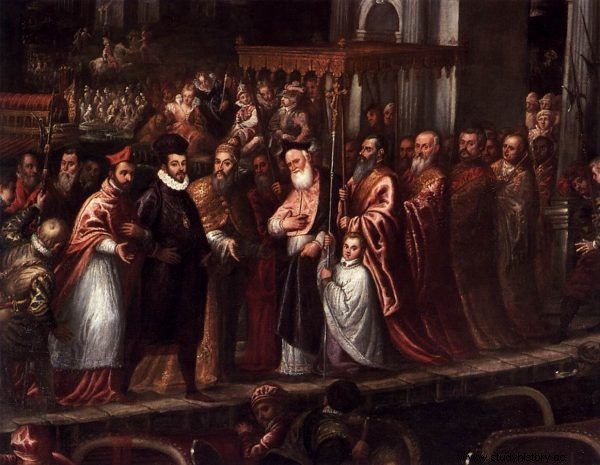
After his escape from Poland, Henryk Walezy was on a real vacation for the first time and he did not intend to waste any time of it. In this painting by Andrea Vincentino you can see her solemnly welcoming the King of Venice (source:public domain).
When Walezy came to his homeland, he no longer had any money donated by his mother. No wonder he was reluctant to come back. His French rule began symbolically. When a crown was put on his head in Reims Cathedral, he exclaimed that he was being hurt. Oh, ruling France at the time could be a headache.
Difficult beginnings of rule
Above all, the country was devoured by the religious war between Catholics and Protestants. In Rzeczpospolita, the first kingdom of Henryk Waleze, it is unimaginable! Polish journalists watched the events on the Seine in disbelief.
A Frenchman has been fighting with his brother for several dozen years, miserably, due to various services with a meager suffering of the destruction of the crown and his nation, and gladly he would have stopped the war as a Pole, knowing that it was wrong, he would have fought such a damned war:confederacy - wrote an anonymous author in the 16th century.
Henryk did not manage to end the war. The French Calvinists argued that if he guaranteed the Poles religious tolerance, it would be appropriate for him to do so also for his "natural subjects". However, the French elite squandered the following years in religious struggles. The king, although a Catholic himself, was criticized even by his fellow believers. The theologian Jean Boucher lamented that the monarch "following a fresh Polish example, he made a plan to maintain both religions in France."
It did not mean that his approach to religious matters was purely instrumental. He was undoubtedly thinking about salvation. In religious practices, he even happened to be in front of the line. As we read in "Queen's rivals":
One evening in December 1574, the entire court had to participate in a procession in which Henry, wearing a carded shirt (though attractively decorated with black skulls), led the way through the pouring cold rain failing penitents, whipping themselves on the march .
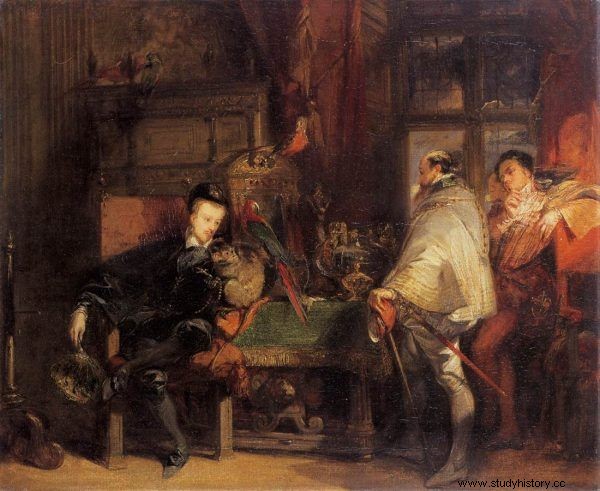
Henry III - it seems - loved to dress in black. This time, no skulls, but a parrot on his shoulder. 19th century painting by Richard Parkes Bonington (source:public domain).
Although it did not work out with religious tolerance in France, Henryk Walezy introduced other Polish patterns with greater success. As the historian Stanisław Grzybowski, Walezy stated:
He learned in Poland that even a quarrelsome parliament full of oppositionists is easier to maneuver than a dissatisfied society, prone to rebellion and not having any representation of its interests .
For this purpose, in the years 1576 and 1588 he called the States General, representing the nobility, clergy and the so-called Third State, that is, all the rest. Already in 1576, the Third State, most plagued by various tributes, indicated that France's deficit could be covered with the income of the clergy - which Henryk Walezy implemented after a few years. Of course, he obtained (or forced) consent from the clerical authorities each time.
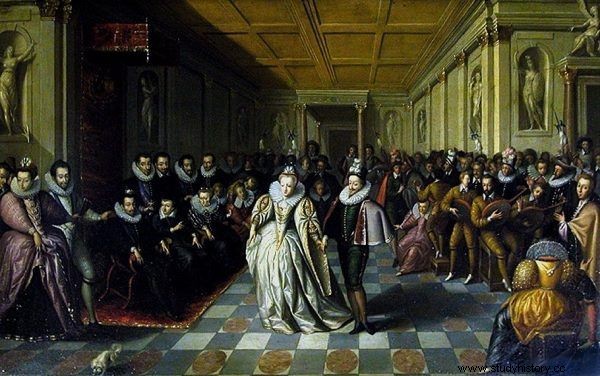
Henryk Walezy (first seated on the left) at the wedding of one of his favorites, Prince Joyeuse, whom he married to his own sister-in-law. Image attributed to Hieronymus Francken (source:public domain).
Royal favorites and descendant of Dracula
The former king of Poland exposed himself not only to the clergy, but also to magnates and nobility. He got rid of them from the royal court. He sent the nobility to the countryside, the magnates to their provinces, and then flooded them with correspondence concerning administrative matters. His beloved courtiers called Les Mignons took the vacated place at the ruler's side. . They looked quite specific. As Nancy Goldstone writes:
They wore long hair, fancifully curled once and twice in curls, and satin bonnets on top of their heads like whore in a brothel; their linen shirts had starched, intricately crimped ruffles half a foot long, giving them the appearance of a St. John, carried on a tray - described them by a Protestant nobleman.
Was there anything more than friendship between the king and the "mignons"? Most historians are skeptical on this point. Anyway, more important is the fact that the royal favorites were showered with money, aristocratic titles and felt with impunity. It has lost many.
An example is the Bussé d'Amboise, one of the most famous "mignons". A brilliant swordsman, he looked into the eyes of death more than once. At the same time, for some time he was the lover of Margaret de Valois, the famous Margot, sister of Henry de Valois. He died at the hand of a certain count whom he seduced his wife.
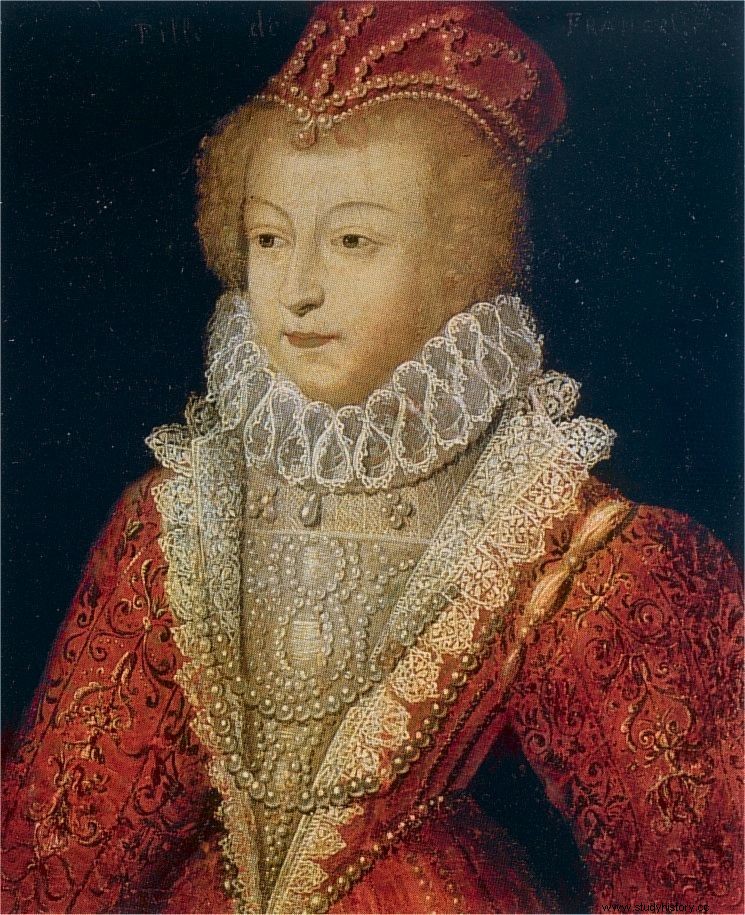
Even the status of the king's favorite and lover of the king's sister did not save the bloody minion d'Amboise. In the painting Margaret de Valois, better known as Queen Margot (source:public domain).
Another favorite of the king - Petru Cercel, or Peter with an Earring - made an extraordinary career. He was a descendant of the famous Dracula, who appeared at the French court in 1579. In 1583, under the influence of French diplomacy, Istanbul appointed him the hospodar of Wallachia, i.e. the ruler of a large part of today's Romania. After a few years, the Turks decided that he was making a hospodar with an earring too independently, so they first stripped him of power and then his head.
Clean this Louvre!
His contemporaries were also irritated by other behaviors of Henry. While the first Polish elected king was happy to return to his homeland, his housing conditions were worse. The Louvre had three times fewer rooms than Wawel. And above all, the Krakow castle was tidy, which could not be said about the seat of the French rulers. Henryk Walezy decided to change that. As Stanisław Grzybowski writes:
He also demanded that the Louvre should be clean, something unheard of in France at the time. Although he did not build the discreet bay windows overlooked at Wawel, hanging over the moats of the castle, he did, however, have the fireplaces and corridors, courtyards and stairs scrubbed every morning. Sam, to the scandal of his subjects, who had not seen such extravagances so far and qualified them as effeminate, also washed .
Happiness in bed and a dagger in my belly
Certainly, in France, King Henry of Valois found personal happiness. In Poland, he would be married to Anna Jagiellon, a woman not young and unfruitful. After returning to France, he wanted to marry his beloved - Duchess de Condé, married. Before the woman got divorced, however, she died of complications after delivery.
After several months of mourning, Henryk Walezy married the Lorraine princess Ludwika, whom he met while still traveling to Poland. The tall blonde immediately liked her. They both loved to dance, and the new queen of France was a quiet and peaceful person, and she did not interfere in politics. The only problem was that they didn't get offspring.
All Polish elected kings died of natural causes (not including the hypothesis that Stefan Batory was poisoned). The only exception is Henryk Walezy. Perhaps he would have lived his days on the Vistula River, but in France he would have a tragic end.
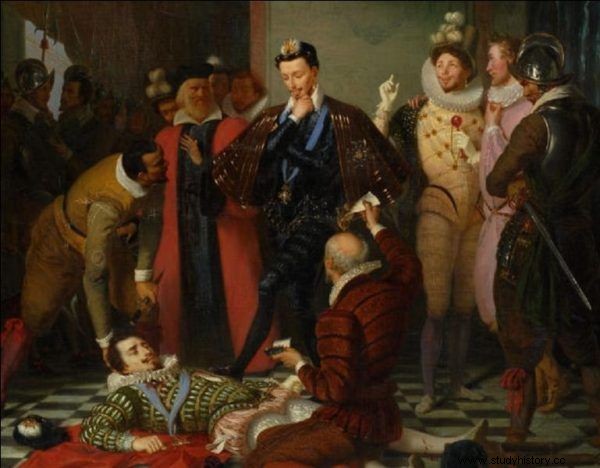
Oh, corpse. I wonder if I kick it, it will move ... At the end of 1588, Henry Walezy got rid of the Duke de Guise, and a few months later he himself became a victim of assassination (source:public domain).
On August 1, 1589, Jacques Clément, a 22-year-old Dominican who had delivered allegedly important letters, appeared before the king. When Henry read the book, the monk pulled a dagger from under his cloak and dealt the king with the death blow. The motivations were religious:the killer found the Catholic king too lenient towards Protestants. Clément was immediately assassinated by royal security. The last Valesius on the French throne passed away to eternity the next day.
Until the end of his life, he called himself the king of Poland. His former subjects received the news of his death with mixed feelings. Protestants even considered the death of King Henry of Valois ... a just punishment from heaven for escaping from the Commonwealth.
